Data-Driven Baseline Analysis of Climate Variability at an Antarctic AWS (2020–2024)
Abstract
1. Introduction
1.1. Gap Analysis
1.2. Problem Statement
1.3. Novelty of Our Work
- Novelty 1: Development of a modular and automated Python v3.8. pipeline to process and analyze large-scale climate data efficiently across multiple years (2020–2024), enabling dynamic insights into environmental changes.
- Novelty 2: Implementation of a predictive model using linear regression to forecast temperature based on multiple meteorological variables such as snow depth, humidity, radiation, and wind speed—enhancing early climate risk detection.
- Novelty 3: Simultaneous exploration of temporal trends and inter-variable relationships using statistical correlation analysis, seasonal decomposition, and visualization, providing a multi-dimensional perspective on climate change in Antarctica.
1.4. Our Solutions
2. Background and Literature Review
3. Dataset
4. Materials and Methods
4.1. Data Ingestion and Preprocessing
4.2. Data Structuring and Transformation
4.3. Analysis and Visualization
4.3.1. Handling Missing and Invalid Data
- Null Value Removal: Missing values were addressed using time-based linear interpolation to preserve continuity in the series. Residual edge gaps were imputed with forward/backward fill. The total missingness was <3% of all entries. This approach ensures continuous time-series inputs for analysis and avoids unnecessary row deletion. Figures presenting continuous lines are based on this imputed dataset.
- Humidity Capping: Relative humidity values were constrained using the .clip() method to a maximum of 100%, since exceeding this threshold is physically unrealistic.
- Date Parsing and Validation: The date column was converted to proper datetime format using pd.to_datetime(), and rows with unparseable or invalid dates were eliminated. Additional columns for year, month, and season were extracted to facilitate time-based and seasonal analysis.
4.3.2. Time-Series and Seasonal Analysis
- Monthly Average Temperature Trends: A line plot grouped by month revealed how temperatures fluctuate across the year, highlighting the coldest and warmest periods.
- Snow Depth Over Time: Time-series plots showed how snow accumulation varied throughout the years, providing insight into shifts in seasonal snowfall patterns.
- Humidity Variation Over Time: A separate plot tracked relative humidity, which can influence snow formation and air moisture levels in polar environments.
- Solar Radiation Trends: Incoming solar radiation was visualized over time, revealing its role in temperature change and seasonal light exposure.
- Seasonal Boxplots of Temperature: A boxplot grouped by season illustrated how temperature distributions vary by season, confirming expected patterns like harsh winters and milder summers.
4.3.3. Correlation Analysis
4.4. Modeling and Prediction
4.4.1. Feature Selection and Data Splitting
- humidity [%]
- pressure [hPa]
- wind_speed [ms−1]
- solar_radiation [W/m2]
- infrared_radiation [W/m2]
- snow_depth [m]
4.4.2. Model Training
- model = LinearRegression()
- model.fit(X_train, y_train)
4.5. Evaluation Metrics
- Score (Coefficient of Determination): Measures how well the variability of temperature is explained by the model. A higher score indicates a better fit.
- Root Mean Squared Error (RMSE): Quantifies the average magnitude of prediction errors. Lower RMSE indicates higher model accuracy.
4.6. Experimental Settings
5. Results and Discussion
5.1. Average Monthly Temperature at the Study Station
5.2. Yearly Average Temperature at the Study Station
5.3. Snow Depth over Time at the Study Station
5.4. Incoming Solar Radiation over Time at the Study Station
- Satisfaction: This image (Figure 7) directly illustrates the variation of solar radiation over time, which is a primary driver of temperature.
- Analysis: This graph suggests incoming solar radiation in W/m2 over the years, from early 2022 to late 2024. It reveals a completely clean and robust annual cycle, with height radiation all through the austral summer months (around December-January) and close-to-zero radiation at some stage in the austral wintry weather months (around June-July).This at once correlates with the month-to-month temperature trends located. higher solar radiation ends in higher temperatures and vice versa. This sturdy seasonal forcing is a dominant element in Antarctica’s weather. The direct relationship between solar radiation and temperature is fundamental for understanding energy stability inside the Antarctic machine.
5.5. Correlation Matrix
Analysis
5.6. Model Performance
5.6.1. Feature Importance
5.6.2. Interpretation
5.7. Impact
5.8. Future Directions
6. Conclusions
Supplementary Materials
Author Contributions
Funding
Institutional Review Board Statement
Informed Consent Statement
Data Availability Statement
Acknowledgments
Conflicts of Interest
References
- Shehzadi, M.; Ali, R.H.; Abideen, Z.u.; Ijaz, A.Z.; Khan, T.A. Enhancing Flood Resilience: Streamflow Forecasting and Inundation Modeling in Pakistan. Eng. Proc. 2023, 56, 315. [Google Scholar] [CrossRef]
- Diener, T.; Sasgen, I.; Agosta, C.; Fürst, J.J.; Braun, M.H.; Konrad, H.; Fettweis, X. Acceleration of dynamic ice loss in Antarctica from satellite gravimetry. Front. Earth Sci. 2021, 9, 741789. [Google Scholar] [CrossRef]
- Wang, Y.; Zhang, X.; Ning, W.; Lazzara, M.A.; Ding, M.; Reijmer, C.H.; Smeets, P.C.; Grigioni, P.; Heil, P.; Thomas, E.R.; et al. The AntAWS dataset: A compilation of Antarctic automatic weather station observations. Earth Syst. Sci. Data 2023, 15, 411–429. [Google Scholar] [CrossRef]
- Genthon, C.; Veron, D.; Vignon, E.; Six, D.; Dufresne, J.L.; Madeleine, J.B.; Sultan, E.; Forget, F. 10 years of temperature and wind observation on a 45 m tower at Dome C, East Antarctic plateau. Earth Syst. Sci. Data 2021, 13, 5731–5746. [Google Scholar] [CrossRef]
- Mottram, R.; Hansen, N.; Kittel, C.; van Wessem, J.M.; Agosta, C.; Amory, C.; Boberg, F.; van de Berg, W.J.; Fettweis, X.; Gossart, A.; et al. What is the surface mass balance of Antarctica? An intercomparison of regional climate model estimates. Cryosphere 2021, 15, 3751–3784. [Google Scholar] [CrossRef]
- Ul Hassan, I.; Ali, R.H.; Ul Abideen, Z.; Khan, T.A.; Kouatly, R. Significance of Machine Learning for Detection of Malicious Websites on an Unbalanced Dataset. Digital 2022, 2, 501–519. [Google Scholar] [CrossRef]
- Haider, A.; Siddique, A.B.; Ali, R.H.; Imad, M.; Ijaz, A.Z.; Arshad, U.; Ali, N.; Saleem, M.; Shahzadi, N. Detecting Cyberbullying using Machine Learning Approaches. In Proceedings of the 2023 International Conference on IT and Industrial Technologies (ICIT), Chiniot, Pakistan, 9–10 October 2023; IEEE: Piscataway Township, NJ, USA, 2023; pp. 1–6. [Google Scholar] [CrossRef]
- Siddique, A.B.; Bakar, M.A.; Ali, R.H.; Arshad, U.; Ali, N.; Abideen, Z.U.; Khan, T.A.; Ijaz, A.Z.; Imad, M. Studying the effects of feature selection approaches on machine learning techniques for Mushroom classification problem. In Proceedings of the 2023 International Conference on IT and Industrial Technologies (ICIT), Chiniot, Pakistan, 9–10 October 2023; IEEE: Piscataway Township, NJ, USA, 2023; pp. 1–6. [Google Scholar] [CrossRef]
- Mashhood, A.; ul Abideen, Z.; Arshad, U.; Ali, R.H.; Khan, A.A.; Khan, B. Innovative Poverty Estimation through Machine Learning Approaches. In Proceedings of the 2023 18th International Conference on Emerging Technologies (ICET), Peshawar, Pakistan, 6–7 November 2023; IEEE: Piscataway Township, NJ, USA, 2023; pp. 154–158. [Google Scholar] [CrossRef]
- Wang, S.; Li, G.C.; Zhang, Z.H.; Zhang, W.Q.; Wang, X.; Chen, D.; Chen, W.; Ding, M.H. Recent warming trends in Antarctica revealed by multiple reanalysis. Adv. Clim. Change Res. 2025, 16, 447–459. [Google Scholar] [CrossRef]
- Gao, Q.; Sime, L.C.; McLaren, A.J.; Bracegirdle, T.J.; Capron, E.; Rhodes, R.H.; Steen-Larsen, H.C.; Shi, X.; Werner, M. Evaporative controls on Antarctic precipitation: An ECHAM6 model study using innovative water tracer diagnostics. Cryosphere 2024, 18, 683–703. [Google Scholar] [CrossRef]
- Salinas, C.X.; Cárdenas, C.A.; González-Aravena, M.; Rebolledo, L.; Cruz, F.S. Mapping scientific fieldwork data: A potential tool for improving and strengthening Antarctic Specially Protected Areas as an effective measure for protecting Antarctic biodiversity. Biodivers. Conserv. 2024, 33, 929–948. [Google Scholar] [CrossRef]
- Cai, X.; Li, D.; Zou, Y.; Liu, Z.; Heidari, A.A.; Chen, H. A hybrid wind speed forecasting model with rolling mapping decomposition and temporal convolutional networks. Energy 2025, 324, 135673. [Google Scholar] [CrossRef]
- Koerich, G.; Fraser, C.I.; Lee, C.K.; Morgan, F.J.; Tonkin, J.D. Forecasting the future of life in Antarctica. Trends Ecol. Evol. 2023, 38, 24–34. [Google Scholar] [CrossRef] [PubMed]
- Tewari, K.; Mishra, S.K.; Salunke, P.; Dewan, A. Future projections of temperature and precipitation for Antarctica. Environ. Res. Lett. 2022, 17, 014029. [Google Scholar] [CrossRef]
- Maniraj, S.P.; Rose, J.D.; Arunachalam, R.; Rangasamy, K.; Patil, V.R.; Kathirvelu, S. Polar region climate dynamics: Deep learning and remote sensing integration for monitoring arctic and antarctic changes. Remote Sens. Earth Syst. Sci. 2024, 7, 582–595. [Google Scholar] [CrossRef]
- Casado, M.; Hébert, R.; Faranda, D.; Landais, A. The quandary of detecting the signature of climate change in Antarctica. Nat. Clim. Chang. 2023, 13, 1082–1088. [Google Scholar] [CrossRef]
- Nicola, L.; Notz, D.; Winkelmann, R. Revisiting temperature sensitivity: How does Antarctic precipitation change with temperature? Cryosphere 2023, 17, 2563–2583. [Google Scholar] [CrossRef]
- King, M.A.; Lyu, K.; Zhang, X. Climate variability a key driver of recent Antarctic ice-mass change. Nat. Geosci. 2023, 16, 1128–1135. [Google Scholar] [CrossRef]
- Strugnell, J.M.; McGregor, H.V.; Wilson, N.G.; Meredith, K.T.; Chown, S.L.; Lau, S.C.; Robinson, S.A.; Saunders, K.M. Emerging biological archives can reveal ecological and climatic change in Antarctica. Glob. Chang. Biol. 2022, 28, 6483–6508. [Google Scholar] [CrossRef]
- Blazsek, S.; Escribano, A. Robust estimation and forecasting of climate change using score-driven ice-age models. Econometrics 2022, 10, 9. [Google Scholar] [CrossRef]
- Massonnet, F.; Barreira, S.; Barthélemy, A.; Bilbao, R.; Blanchard-Wrigglesworth, E.; Blockley, E.; Bromwich, D.H.; Bushuk, M.; Dong, X.; Goessling, H.F.; et al. SIPN South: Six years of coordinated seasonal Antarctic sea ice predictions. Front. Mar. Sci. 2023, 10, 1148899. [Google Scholar] [CrossRef]
- Holland, P.; O’Connor, G.; Bracegirdle, T.; Dutrieux, P.; Naughten, K.; Steig, E.; Schneider, D.; Jenkins, A.; Smith, J. Anthropogenic and internal drivers of wind changes over the Amundsen Sea, West Antarctica, during the 20th and 21st centuries. Cryosphere Discuss. 2022, 2022, 1–30. [Google Scholar] [CrossRef]
- Grigoryev, T.; Verezemskaya, P.; Krinitskiy, M.; Anikin, N.; Gavrikov, A.; Trofimov, I.; Balabin, N.; Shpilman, A.; Eremchenko, A.; Gulev, S.; et al. Data-driven short-term daily operational sea ice regional forecasting. Remote Sens. 2022, 14, 5837. [Google Scholar] [CrossRef]
- Kawaguchi, S.; Atkinson, A.; Bahlburg, D.; Bernard, K.S.; Cavan, E.L.; Cox, M.J.; Hill, S.L.; Meyer, B.; Veytia, D. Climate change impacts on Antarctic krill behaviour and population dynamics. Nat. Rev. Earth Environ. 2024, 5, 43–58. [Google Scholar] [CrossRef]
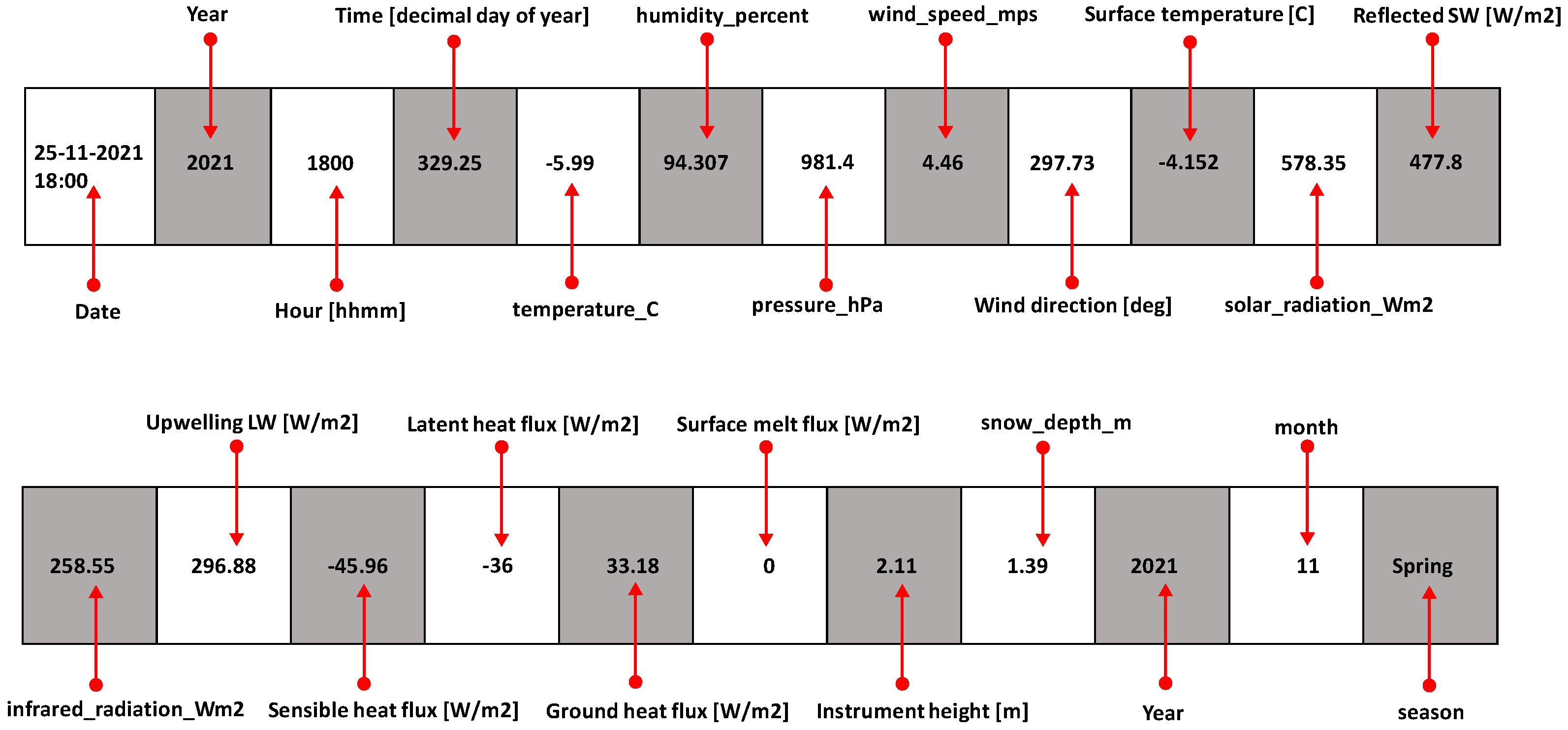

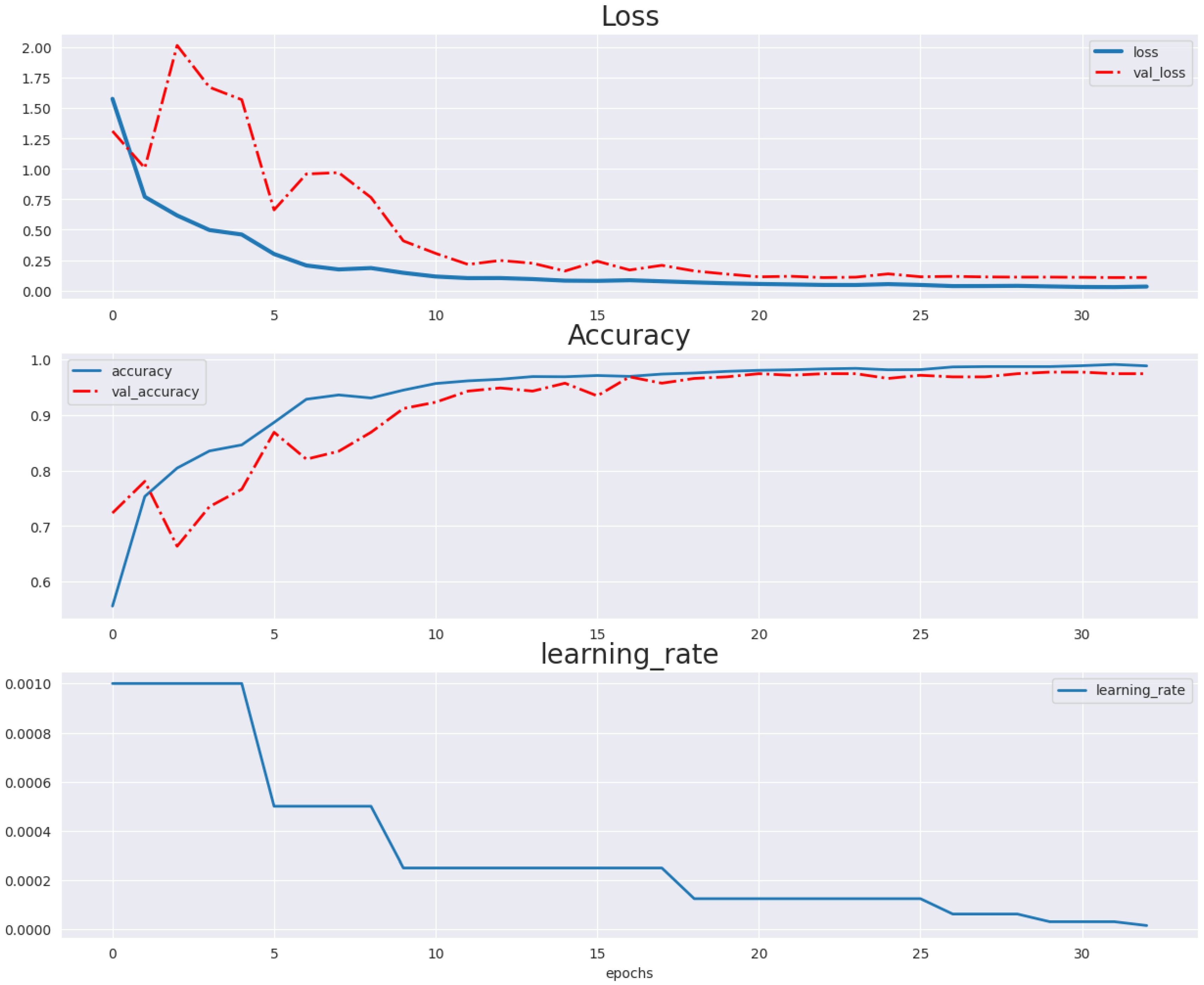

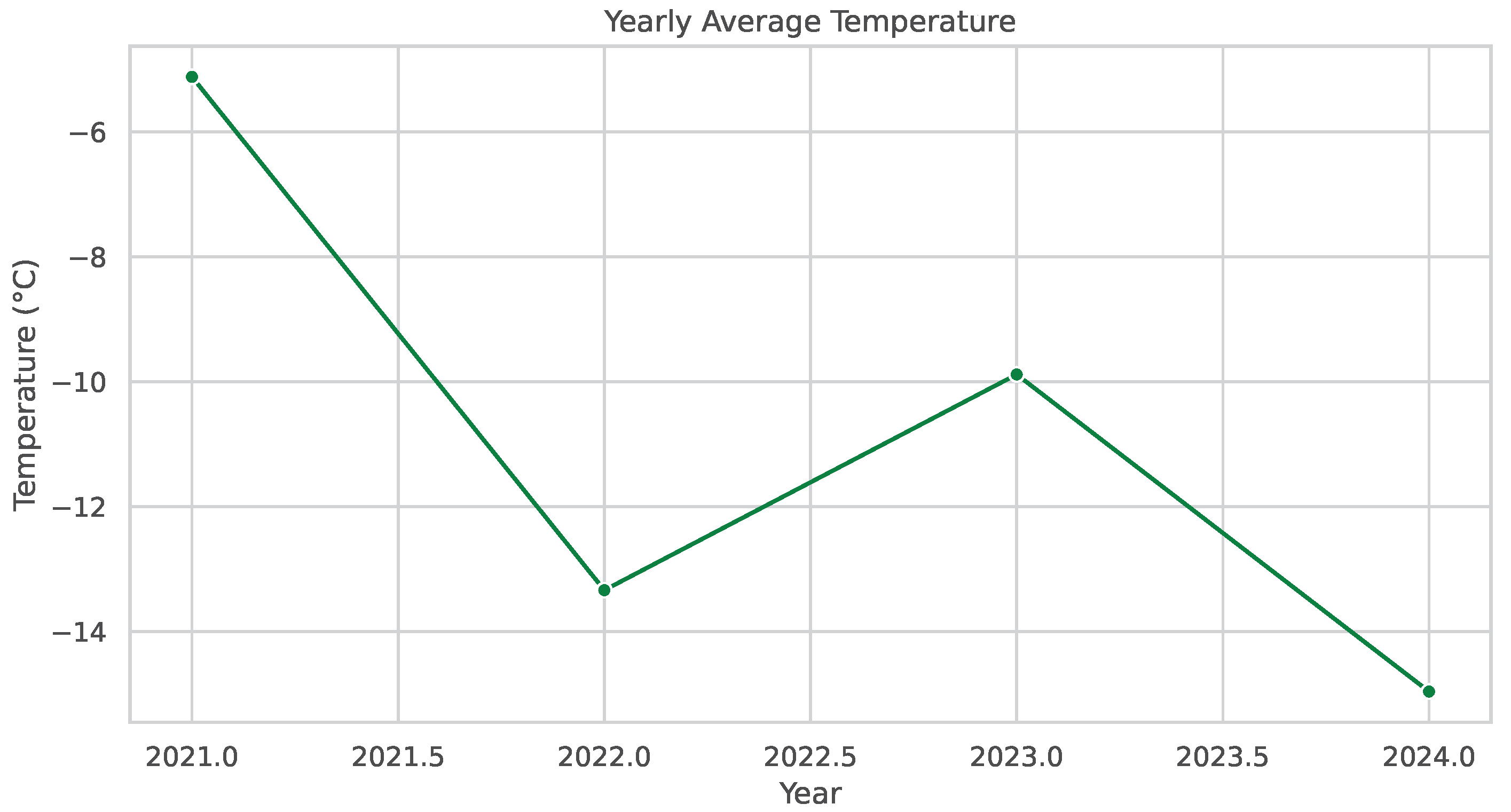

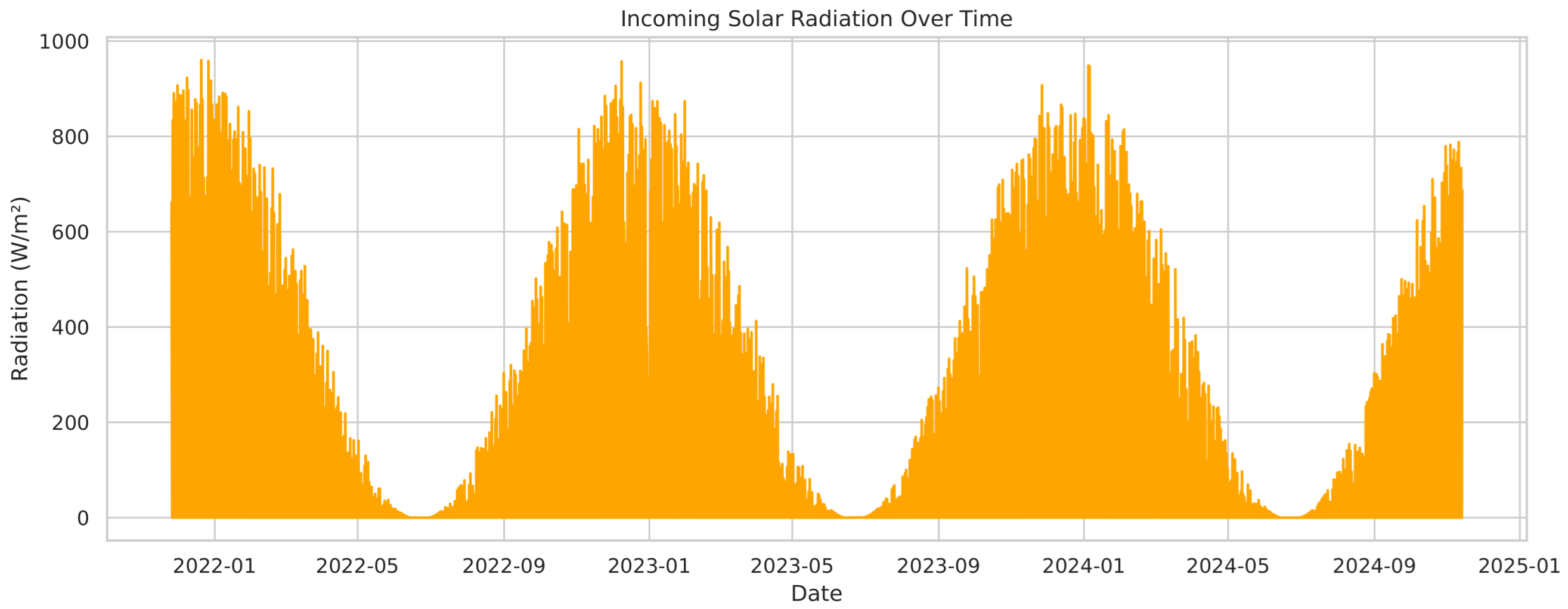
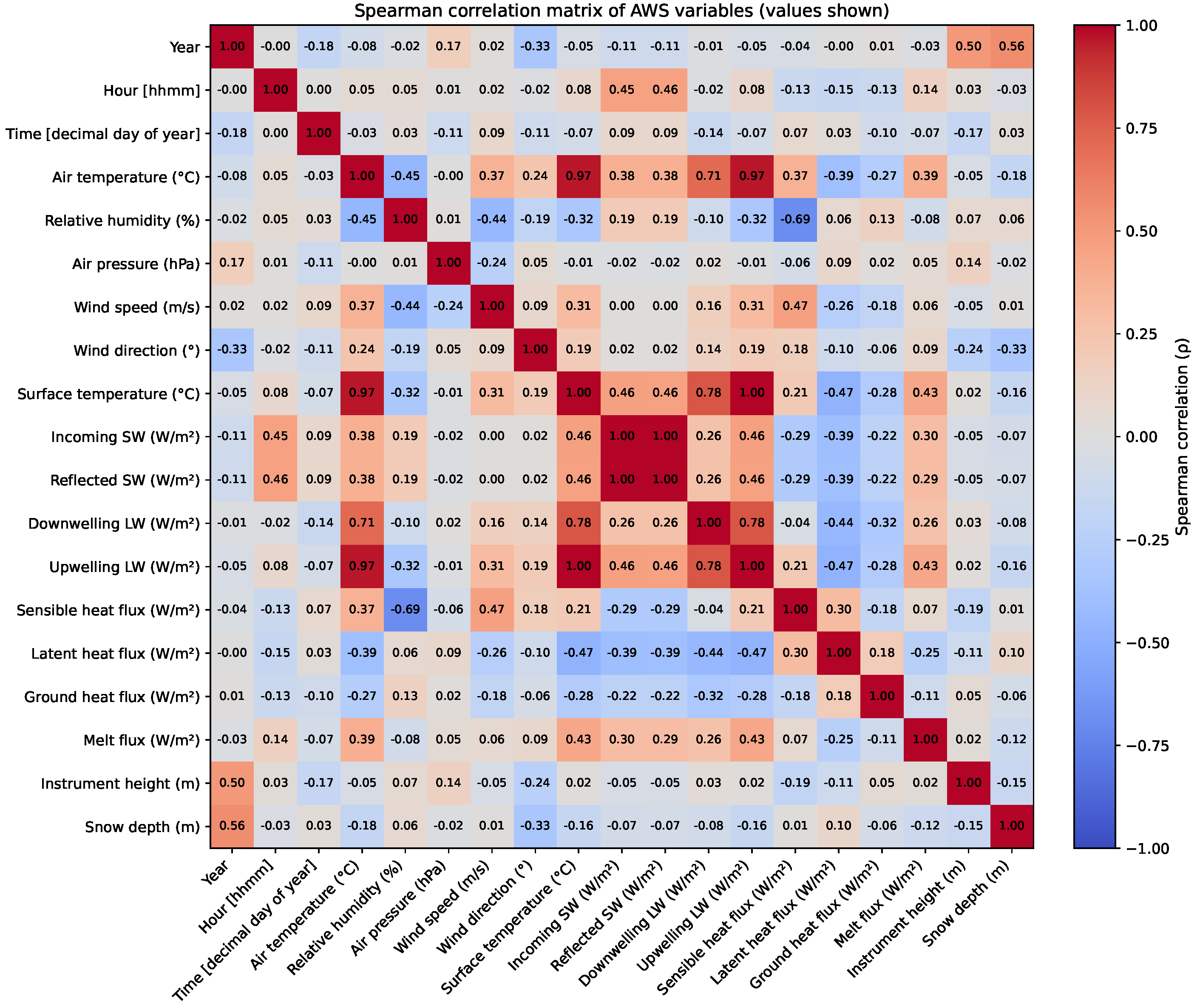
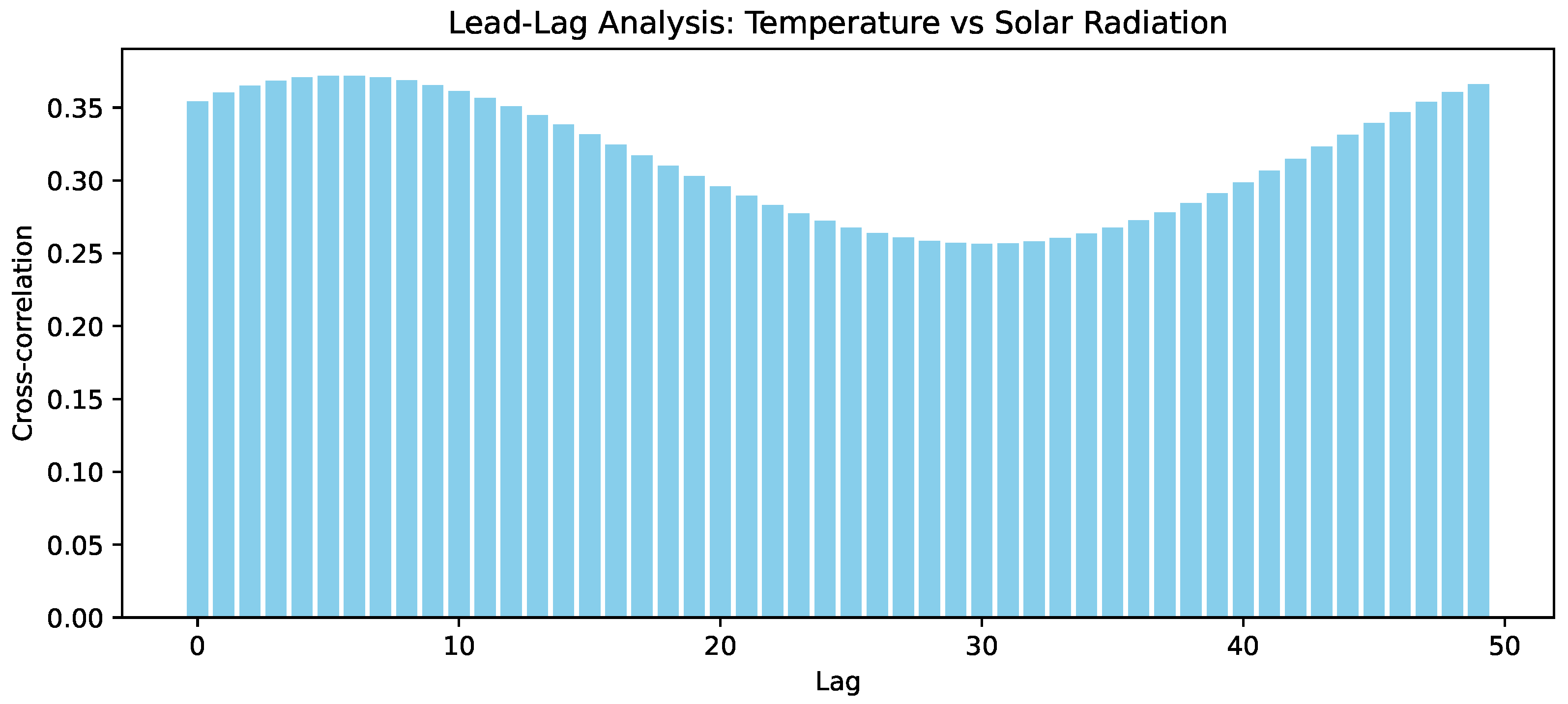

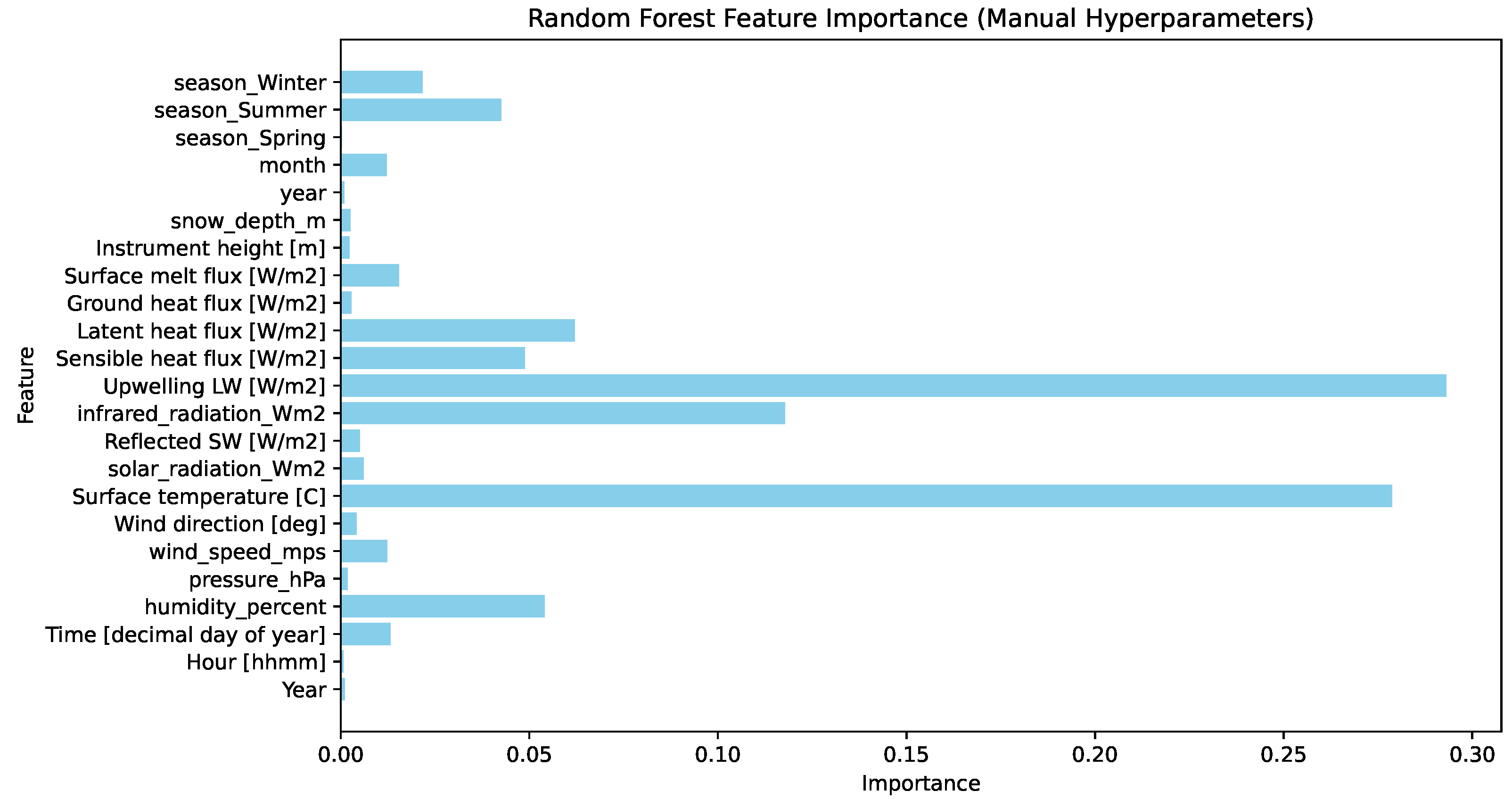
| Year | Author | Title (Short) | Method(s) | Key Results | Contribution | Limitation |
|---|---|---|---|---|---|---|
| 2023 | Koerich et al. [14] | SIPN South Initial Results | Multi-group seasonal forecast intercomparison | Ensemble median captures negative anomalies well; observations within forecast spread | Demonstrates collaborative ensemble skill for Antarctic prediction | Ross Sea bias; ensemble spread remains large |
| 2022 | Tewari et al. [15] | Early Predictability Estimates | CCSM3 ensemble, idealized perturbation tests | Found 3–9 month predictability windows; seasonal re-emergence of predictability | Provided first model-based timescales for Antarctic predictability | Only model-based; lacks direct real-world verification |
| 2024 | Maniraj et al. [16] | Observational Skill Assessment | Statistical models, linear Markov, hindcasts | Up to 1-year skill for regional ice concentration; strong seasonal differences | Demonstrates empirical forecast potential using reanalysis | Sparse observational data limits skill |
| 2023 | M. Casado [17] | Regional Mechanisms (Wind–Ice Link) | Reanalysis link analysis, dynamical-statistical | Zonal wind anomalies linked to late summer Ross Sea ice; 5-month lag found | Identifies physical driver for regional predictability | Mechanism not robust across models |
| 2023 | Nicola et al. [18] | Thickness Influence | Coupled dynamical hindcasts with initialization | Including ice thickness boosts forecast skill; Weddell Sea shows longest horizon | Highlights importance of thickness for skillful prediction | Scarcity of reliable thickness data |
| 2023 | King et al. [19] | S2S System Evaluation | S2S forecasts, strict edge metrics | Existing S2S systems rarely beat climatology beyond weeks | Underscores gap in current S2S systems for Antarctic ice | Limited polar-specific system design |
| 2022 | Strugnell et al. [20] | Ocean Mixed Layer Influence | Multi-GCM ensemble intercomparison | Deeper mixed layers lengthen predictability horizon; ocean vertical structure key | Shows oceanic processes are crucial for sea ice memory | High model spread; regional differences large |
| 2022 | Blazsek et al. [21] | Arctic vs. Antarctic Contrast | Idealized model intercomparison | Antarctic sea ice less sensitive to volume initialization than Arctic | Provides important polar intercomparison baseline | Limited region-specific detail |
| 2023 | Massonnet et al. [22] | New Regime Detectability | Hindcast covering record lows period | Recent higher variance extends skill horizon vs. past | Suggests current conditions may aid longer skill windows | Short satellite record constrains conclusions |
| 2022 | Holland et al. [23] | SIPN South Open Data Resource | Shared community repository | Forecasts and verification data openly accessible for polar community use | Supports further development and policy-relevant research | Data gaps in some regions |
| Dataset Variable | Description |
|---|---|
| date | Temporal information for each observation. |
| Hour | Precise timestamp indicating the hour and fractional part of the day. |
| Year | Calendar year to facilitate comparison across years for climate trend analysis. |
| Time [decimal day of year] | Time expressed as a decimal fraction of the day within the year (e.g., 32.5 = noon on day 32). |
| Temperature [°C] | Air temperature in ° Celsius. |
| Humidity_Percent | Relative humidity expressed as a percentage. |
| pressure_hPa | Atmospheric pressure measured in hectopascals (hPa). |
| wind_speed_mps | Wind speed measured in meters per second. |
| Wind direction [deg] | Direction from which the wind blows, in degrees (0 = North, 90 = East, etc.). |
| Surface temperature [°C] | Temperature measured at the surface in ° Celsius. |
| solar_radiation [W/m2] | Incoming shortwave solar radiation in watts per square meter (W/m2). |
| Reflected SW [W/m2] | Reflected shortwave radiation in watts per square meter (W/m2). |
| infrared_radiation_Wm2 | Incoming longwave (infrared) radiation from the atmosphere. |
| Upwelling LW [W/m2] | Outgoing longwave radiation emitted from the surface. |
| Sensible heat flux [W/m2] | Heat exchange between the surface and atmosphere due to temperature differences. |
| Latent heat flux [W/m2] | Heat exchange caused by water phase changes, such as evaporation or condensation. |
| Ground heat flux [W/m2] | Heat transfer between the surface and subsurface ground. |
| Surface melt flux [W/m2] | Energy flux related to melting occurring at the surface. |
| Instrument height [m] | Height of measurement instruments above the surface. |
| snow_depth [m] | Depth of snow on the surface measured in meters. |
| Year | Duplicate of the calendar year for reference. |
| Month | Calendar month of the observation. |
| Season | Meteorological season corresponding to the month (e.g., Winter, Spring, Summer, Fall). |
Disclaimer/Publisher’s Note: The statements, opinions and data contained in all publications are solely those of the individual author(s) and contributor(s) and not of MDPI and/or the editor(s). MDPI and/or the editor(s) disclaim responsibility for any injury to people or property resulting from any ideas, methods, instructions or products referred to in the content. |
© 2025 by the authors. Licensee MDPI, Basel, Switzerland. This article is an open access article distributed under the terms and conditions of the Creative Commons Attribution (CC BY) license (https://creativecommons.org/licenses/by/4.0/).
Share and Cite
Ashok, A.J.; Faiz, S.; Ali, R.H.; Khan, T.A. Data-Driven Baseline Analysis of Climate Variability at an Antarctic AWS (2020–2024). Digital 2025, 5, 50. https://doi.org/10.3390/digital5040050
Ashok AJ, Faiz S, Ali RH, Khan TA. Data-Driven Baseline Analysis of Climate Variability at an Antarctic AWS (2020–2024). Digital. 2025; 5(4):50. https://doi.org/10.3390/digital5040050
Chicago/Turabian StyleAshok, Arpitha Javali, Shan Faiz, Raja Hashim Ali, and Talha Ali Khan. 2025. "Data-Driven Baseline Analysis of Climate Variability at an Antarctic AWS (2020–2024)" Digital 5, no. 4: 50. https://doi.org/10.3390/digital5040050
APA StyleAshok, A. J., Faiz, S., Ali, R. H., & Khan, T. A. (2025). Data-Driven Baseline Analysis of Climate Variability at an Antarctic AWS (2020–2024). Digital, 5(4), 50. https://doi.org/10.3390/digital5040050






